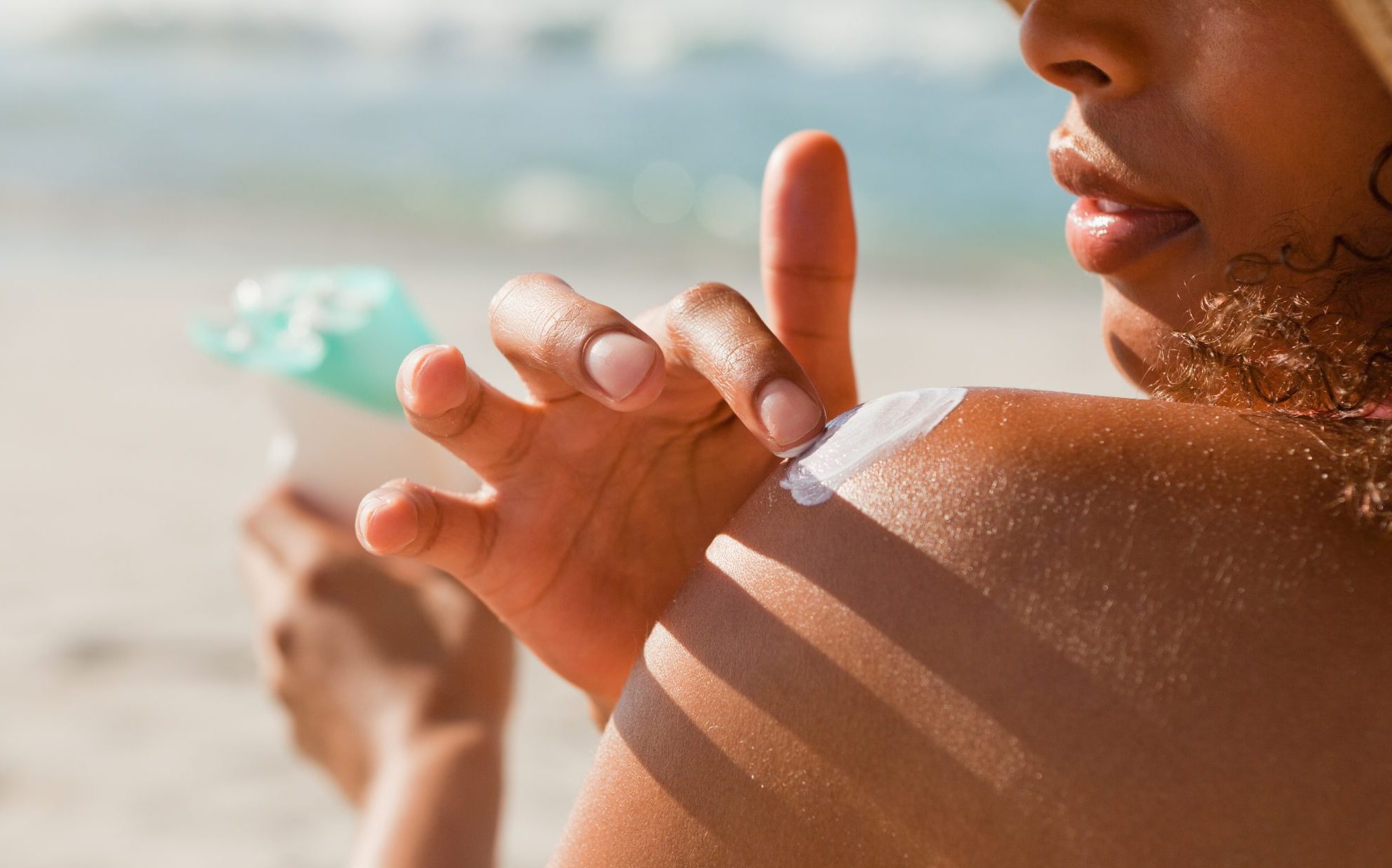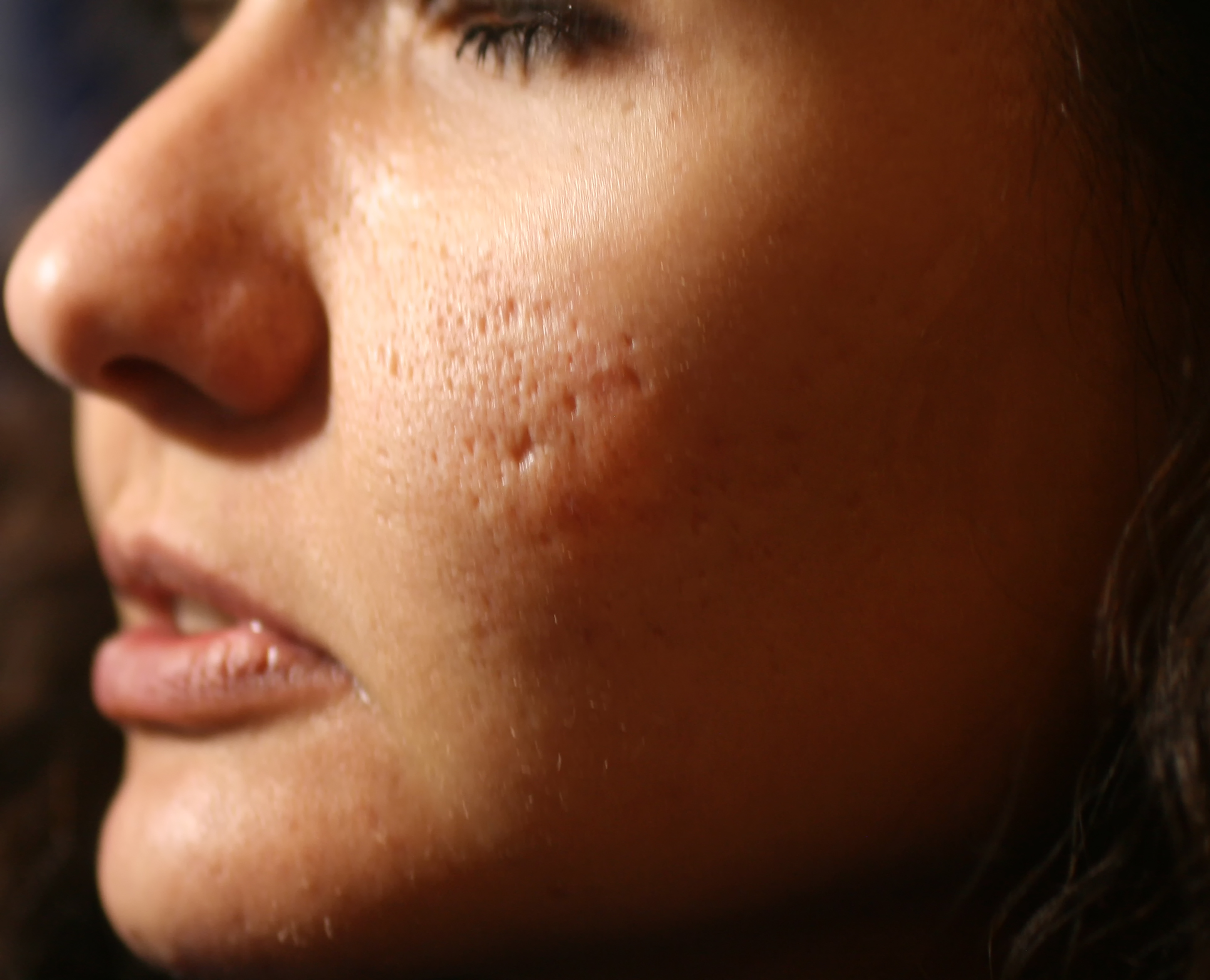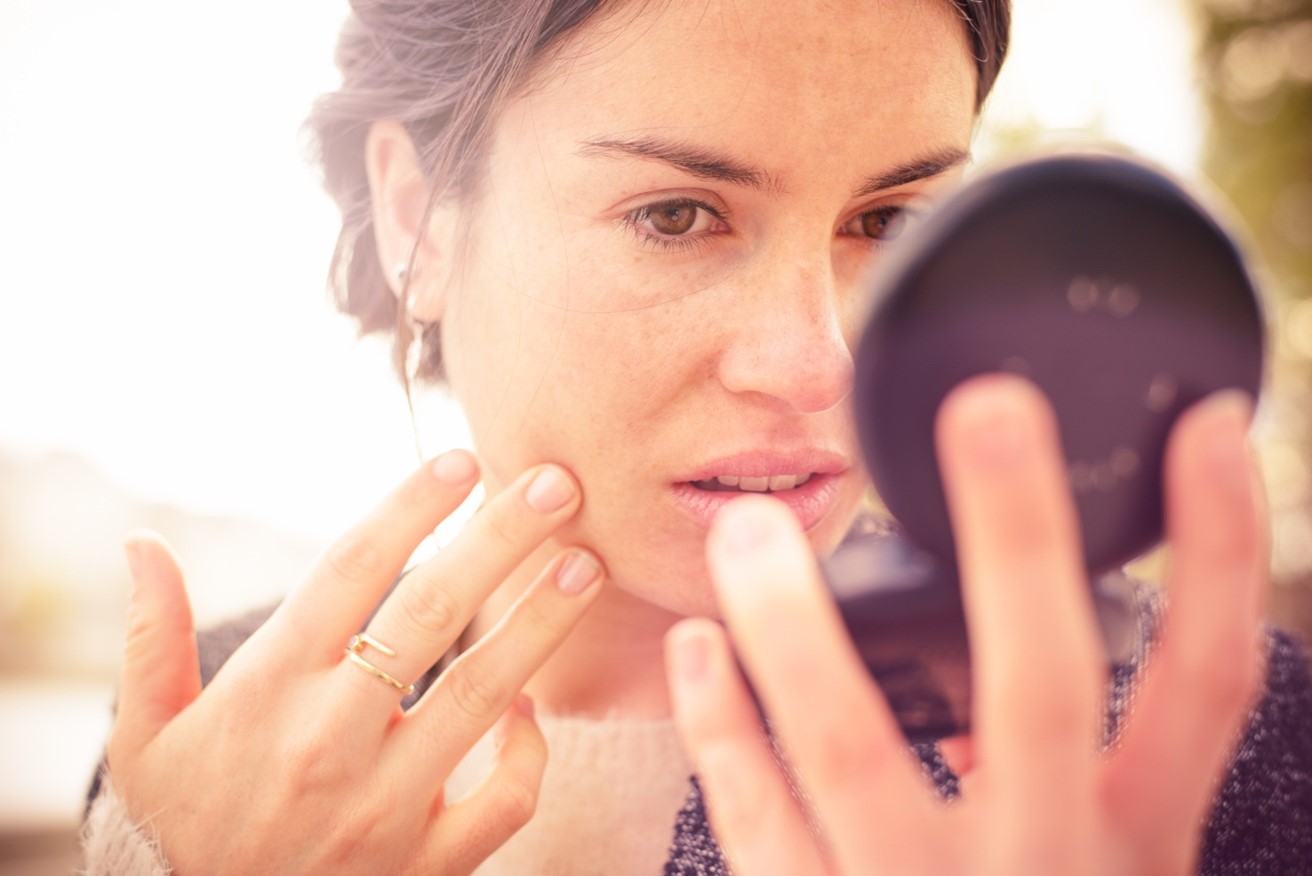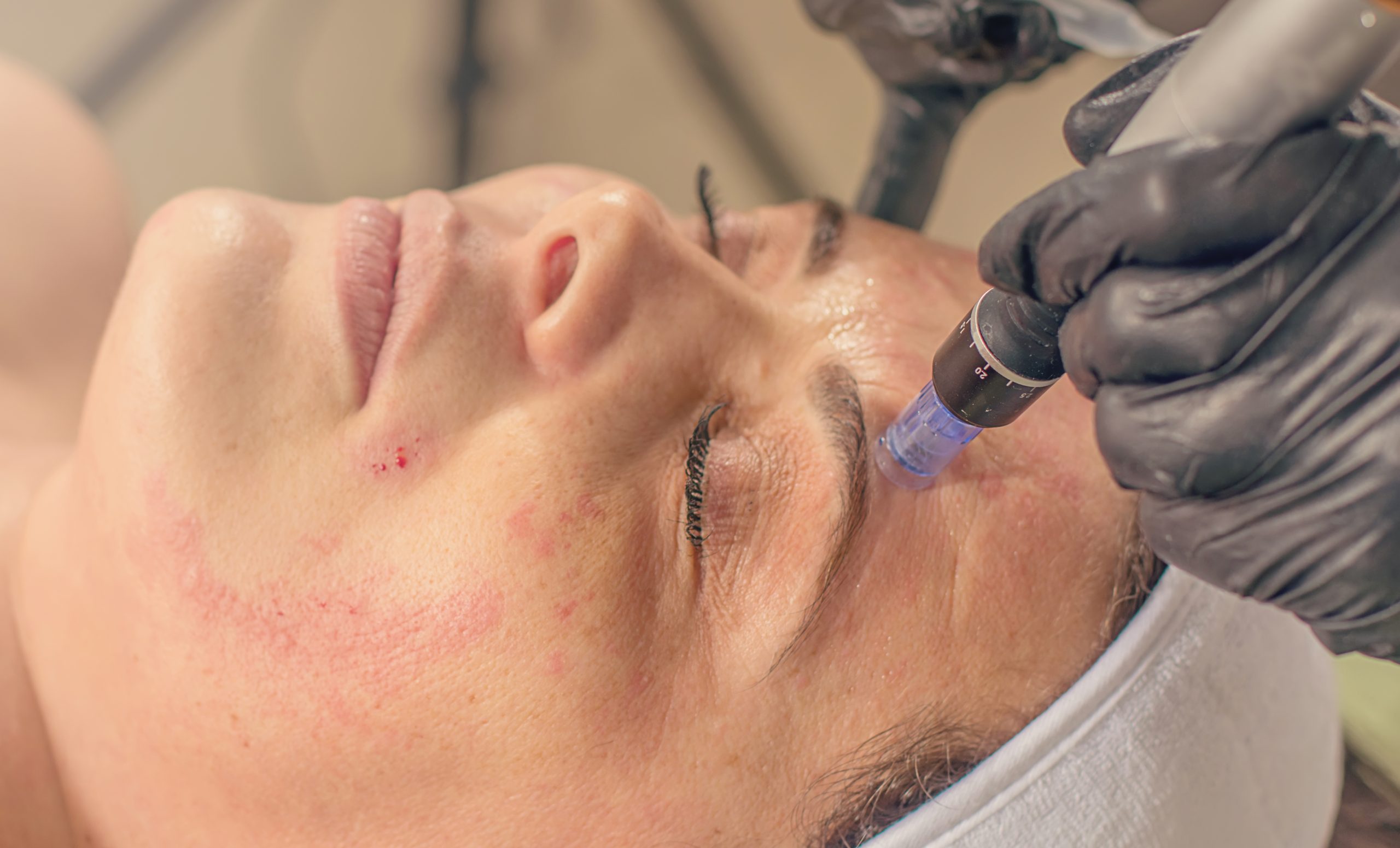The Summer Guide To Sunscreen & Sun Safety
 Posted at Jan 2023
Posted at Jan 2023

The Summer Guide To Sunscreen & Sun Safety
Living in beautiful Southern California with nearly year-round sunshine, we can be outside and enjoy the weather far more than our friends in other states. While we are lucky enough to have 266 days of splendid climate, we need to remember that while we crave the warmth of the sun, protecting our skin from sun damage is a year round, daily responsibility. The temptation for fun in the sun has its roots in our biology –?moderate levels of sunshine are critical to our physical and mental wellbeing, driving our internal production of Vitamin D and fighting off serotonin-deficiencies related to depression and Seasonal Affective Disorder (SAD).
But that’s the key: moderation. Which means in the summer months, when sunlight is abundant, it’s critical that you follow appropriate sun safety practices to protect your skin from the adverse effects of overexposure –?namely sunburns, pre-mature aging, and skin cancer.
If you have read this far, you’re probably thinking –?“Yes, I know! Apply sunscreen, wear a hat…I’ve heard this lecture before!” Unfortunately, while many of us know the sun safety guidelines recommended by medical professionals, few of us consistently or accurately follow them. This article serves as a refresher course on the basics of sunscreen, an update on the newest and most relevant sun safety research, and a how-to guide for treating sun-damaged skin. Keep reading to take your skin care practice to the next level this summer!
Sun safety tips to memorize!
If you take anything away from this article, it should be these 5 sun safety tips:
- Choose a broad spectrum UVA-UVB sunscreen with 30 SPF or greater.
- Pay attention to the inactive ingredients –?stay away from sunscreens that contain retinyl palmitate (Vitamin A) as this will increase your risk of sunburn.
- Reapply every 2 hours. Period, and always after any swimming or water sports, or excessive sweating.
- For post-sunburn skincare, pick a product with Aloe Vera as the active ingredient. Sodium bicarbonate (baking soda) and cornstarch also make great at-home DIY treatments.
- Increase your antioxidants in your diet and/or with oral supplements to further protect your skin from the sun’s free radicals.
- To treat sun spots and sun-damaged skin, add Vitamin A, Vitamin C, AHAs, and Growth Factors to your skincare routine.
But we have barely scratched the surface (of the dermis). Let’s dive one layer deeper to discuss what these sun safety tips really mean when applied practically.
Demystifying the sunscreen jargon
Walking down the sunscreen aisle of the drugstore can be overwhelming if you don’t know what to look for. The first thing you should take note of when you pick up sunscreen is the SPF level. Dermatologists generally recommend that you choose a sunscreen with at least 30 SPF – however, because most people do not apply enough sunscreen to properly protect their skin, an even safer bet is a sunscreen of 60 SPF or higher.
You also want to select a sunscreen that offers broad spectrum coverage, meaning that it protects your skin from both UVA rays and UVB rays. While it is UVB rays specifically that cause sunburn, UVA rays are responsible for signs of premature aging like fine lines, wrinkles, and sunspots, and both UVA and UVB rays cause skin cancer.
Additionally, you will want to make note of whether a sunscreen is labeled “sweat resistant” or “water resistant.” Don’t make the mistake of bringing “sweat resistant” sunscreen to the pool unless you are ready to reapply after every dip! Even water resistant sunscreen needs to be applied after swimming, as it just provides protection while in the water.
Familiarize yourself with your sunscreen ingredients
Jargon aside, there are also key ingredients you should look out for when choosing the right sunscreen for your complexion. Sunscreens can be categorized into two types based on the way in which they protect your skin: chemical and physical.
Chemical sunscreens contain active ingredients like avobenzone, octinoxate and oxybenzone that work by soaking into the skin and converting UV rays into heat that is then released by the body. If you choose to use a chemical sunscreen, it is important to wait at least 15 minutes after application before heading outside.
Physical sunscreens, on the other hand, sit atop your skin creating a physical barrier between your skin and the sun. These types of sunscreens are mineral based with active ingredients like zinc oxide and titanium dioxide. Unlike chemical sunscreen, physical sunscreen does not need to be absorbed into the skin to be effective, so you do not need to wait 15 minutes before heading out into the sun and you can apply it as part of your regular skin care routine –?just as long as you do!
At Spark Health, we recommend that our patients choose physical sunscreens over chemical-based products. Many chemical sunscreens have been shown to have hormone disrupting effects and high rates of allergic reactions. Additionally, oxybenzone, an active ingredient commonly found in chemical sunscreens, has been shown to cause irreparable damage to corral reef ecosystems. However, not all chemical sunscreens are created equal and the Environmental Working Group has put together?an easy chart?to help you navigate sunscreen ingredients. Furthermore, if you are curious about the safety of your sunscreen you have at home, use?the Environmental Working Group Cosmetics Database?to search for the safety of your products.
Soothe sunburnt skin with aloe vera
In the case you get a little too much sun and your skin is hot and red, look for after-sun lotions that contain Aloe Vera as a key ingredient. Here are some of our favorite after-sun soothing products.
- Goddess Garden After-Sun Gel with Aloe Spray
- W.S. Badger After Sun Balm
- All Terrain Aloe Gel Skin Relief
- MyChelle Cucumber Cooler Soothing Spray
If you want to make use of items you already have in your cupboards, baking soda and oatmeal also make a great after sun treatment. Create a water-based mixture with both ingredients and slather on your burn for instant relief.
Supercharge sun protection with antioxidants
Antioxidants play a key role in ridding our bodies of toxins and free radicals – the destructive atoms created by UV rays that damage our skin. Increasing your dietary and supplemental antioxidants will help protect you from the inside out. Focus on antioxidant rich foods like berries, leafy greens, carrots, red bell peppers, salmon, chocolate, green tea and high quality coffee.
Sometimes simply adding more antioxidants into the diet isn’t enough. In those cases, our naturopathic doctors help patients increase antioxidant levels through IV therapy and vitamin injections that deliver vitamins, minerals, and amino acids directly into the blood stream.
Reverse sun damage with age-fighting active ingredients
Sometimes we don’t notice the after-effects of our sun exposure until years later. Here are some of our favorite ways to reverse the signs of aging due to sun exposure:
- Vitamin C. For added sun protection in the morning use a topical Vitamin C serum for its antioxidant benefits. We love Skin Authority’s Super-C Serum and Devita’s C-Pro Plus for a 20% Vitamin C content that will help to brighten dark spots and increase collagen production.
- Alpha Hydroxy Acids. AHAs are exfoliants that are used to get rid of dead skin cells and can improve the appearance of sun damaged skin. We love Skin Authority’s Resurfacing Accelerator and Suki Skincare’s Resurfacing Enzyme Peel.
- Vitamin A. Whether you can tolerate a retinol or need a gentler version like retinyl palmitate, vitamin A is one of the best anti-aging nutrients around. Remember to only use in the evening and wash off completely in the morning before going outside.! Our favorites are Skin Authority’s Vitamin A Cell Renewal and AllVia’s Retinol Cream.
- Growth Factors. With sun damage comes fine lines and wrinkles. One the best ways to nourish sun damaged skin is with Skin Authority’s Skin Growth Factor Technology (SGF-4). Using the Wrinkle Reversing Serum and Dramatic Eye Lift in the morning will tighten and brighten those areas that have had a little too much sun.
- Microneedling. Looking for an effective and non-invasive treatment to exfoliate and repair the layers of sun damaged skin? The microneedling facial is a popular collagen induction therapy that reduces fine lines?and?wrinkles, fills in acne scars, decreases the appearance of pores, and evens out discoloration and melasma.
Curious about the safety of your sunscreens at home? Want to learn more about sun safety and skin health? Located in Solano Beach in San Diego County, CA, Spark Health naturopathic health clinic takes a collaborative approach to natural medicine, partnering with patients to help them achieve their unique health and wellness goals. Contact us to book a free skin health consultation today!












